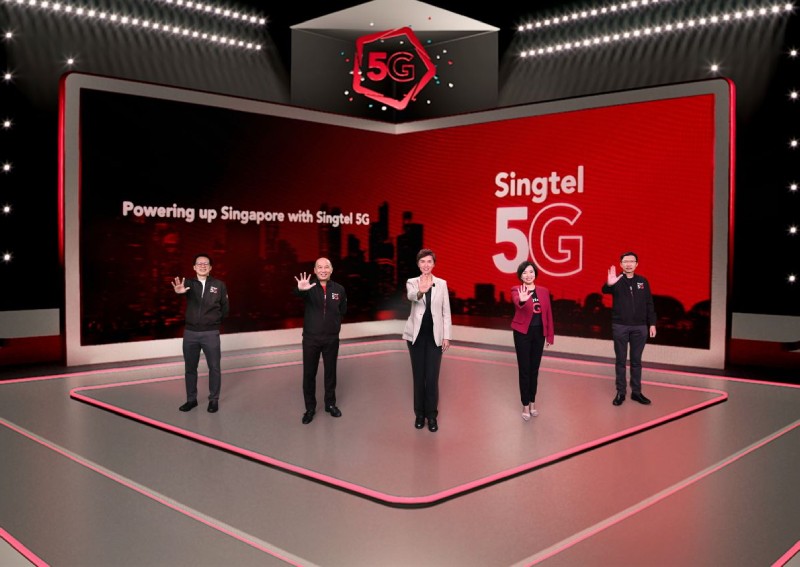Singtel promises nationwide standalone indoor and outdoor 5G coverage by 2025

Singtel aims to have islandwide standalone (SA) 5G coverage in Singapore by 2025, heralding the new generation of mobile network as the logical next step for both consumers and enterprises in Singapore.
Currently, two-thirds of the island enjoys 5G coverage, with both non-standalone (NSA), which builds on the existing 4G network, and SA infrastructure, which already covers half the nation.
Ookla, the web testing and network diagnostics company, has recognised Singtel as the fastest 5G network operator in the country. And 5G does have an impressive list of features, especially when compared to 4G.
Singtel stated that the 5G network is 10 times faster than 4G, able to reach a 1.2 Gbps download speed. It is also said to be twice as responsive as 4G, with close to no latency and boasting a response time of below 10ms.
The near real-time response means that it is possible to run operations centres virtually, with remote monitoring being as good as on-site monitoring.
In light of the Covid-19 pandemic, and the rising demand and need for robust virtual workstations, the 5G network is a huge boon for the increasingly commonplace hybrid workspace.
The network is already being used by crane operators at Pasir Panjang Terminal to operate cranes remotely.
There are more enterprise use cases. For example, pushing AI technology forward with real-time data collection, computation, and analytics at large volumes is now possible.
Also, remote medical care and surgery may be possible in the near future with that same technology, allowing a more timely response to critical situations.
While there are experiments and trials still underway to confirm more use cases for the 5G network, Mr Yuen Kuan Moon, Group CEO of Singtel, believes that it can “transform business models and deliver enhanced products and services on a scale like never before”.

On a consumer level, use cases include access to ultra-smooth high definition video streaming from anywhere, exemplified by the 4K live stream of Resort World Sentosa’s S.E.A Aquarium that can be viewed at Singtel’s pop-up store, Unboxed, located at SingPost Centre.

This, along with the purported highly responsive gaming experience, are going to be available both indoors and outdoors given Singtel’s all-encompassing approach in spreading 5G coverage.

And with the low latency, it is even possible to have musicians play together remotely without them jamming in discordant timings.
Singtel also demonstrated their 5G-powered remote racing experience at Formula Square as a testament to the 5G network’s strength.

With simulator booths some distance away from the race track itself, users can drive remote control cars that can go up to 58km/h along the track, experiencing precision control with the near-instantaneous responses as they twist and turn adroitly at high speed.

Seamlessness is the key here, down to the way the network is being rolled out in a contiguous fashion, ensuring that users will not experience hiccups even as they are on the move.
[[nid:542596]]
Should 5G be everything it sets out to be, when it becomes the norm, users may not even be cognisant of the mobile network doing its magic.
After all, when smooth internet and lightning-fast download speed become a matter of fact in daily life, all the technology behind the scene becomes blissfully invisible.
With this new technology and all that it offers, cybersecurity becomes an even more crucial consideration.
Singtel stated that the 5G network will be more secure than 4G, with better encryption and identity protection tools.
The foundation of this security comes from a zero-trust policy, where all activities must be verified before being trusted.
This “no compromise” approach is one that inspires confidence as the rollout of Singtel’s 5G network reaches completion.
Singtel currently has over 180,000 subscribers using their 5G network, and that number is very likely to rise, especially because, as Minister for Communications and Information Mrs Josephine Teo said, “(5G) can change the way we live and work in profound ways, and become essential for the digital developments of the future.”
This article was first published in Geek Culture.